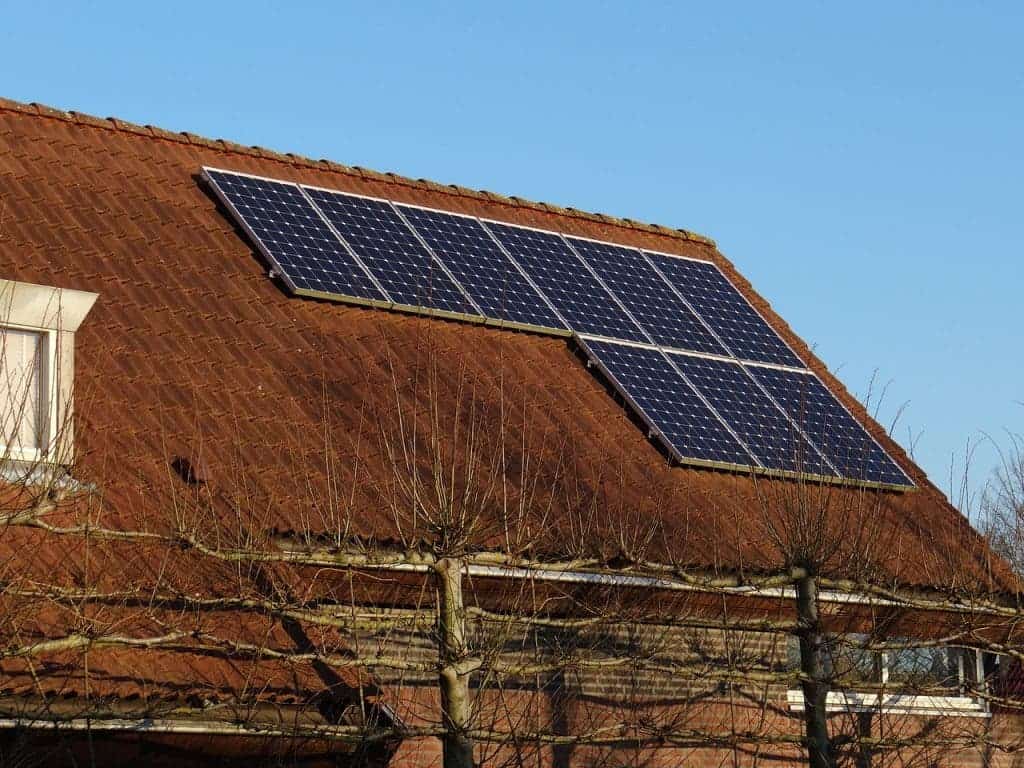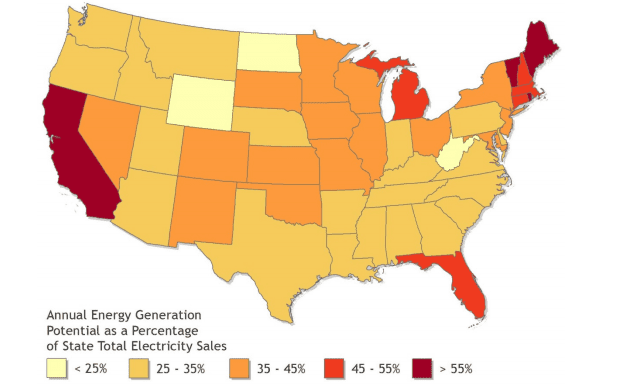The National Renewable Energy Laboratory (NREL) estimates that rooftop solar has the potential to cover 39 percent of the country’s electricity needs. Sunny states like California, Texas and Florida topped the list of states where rooftop solar could generate the most energy.

In 2008, the agency estimated the country could meet 21 percent of its electricity demand using rooftop solar. Then, scientists reckoned its potential was 800 terawatt-hours of electricity per year. Eight years later, this estimate jumped almost two fold to 1,432 terawatt-hours of annual rooftop solar generation. Today, commercial solar panels are vastly superior in terms of efficiency. There are also more buildings.
California is the clear leader, having the potential to generate 74 percent of its electricity from rooftop panels alone. Percentage wise, the next states in line are surprisingly the New England states which don’t get much sunshine, but use little electricity to begin with. In absolute numbers, topping the list are, again, California, Texas, Florida and New York — in this order.

state’s total electricity sales in 2013. Image: NREL.
The researchers made their estimates by analyzing LIDAR data captured by aircraft for 128 cities from around the country. LIDAR stands for LIght Detection And Ranging — a technology that uses lasers to measure distance highly accurately. Correlating LIDAR with known solar energy potential for every square meter, the researchers could estimate how much energy solar panels placed on the rooftops of buildings and homes could generate. The results where then extrapolated for the rest of the country. In the previous 2008 analysis LIDAR wasn’t used, which is one of the reasons estimates are higher now.
“Although only 26% of the total rooftop area on small buildings (those with a footprint smaller than 5,000 ft2 ) is suitable for PV deployment, the sheer number of buildings in this class gives small buildings the greatest technical potential. Small building rooftops could accommodate 731 GW of PV capacity and generate 926 TWh/year of PV energy, which represents approximately 65% of rooftop PV’s total technical potential. Medium and large buildings have a total installed capacity potential of 386 GW and energy generation potential of 506 TWh/year, which represents approximately 35% of the total technical potential of rooftop PV,” the NREL researchers noted in their report.
This all sounds great news for renewable energy enthusiasts. It sends a clear signal that the potential is there. Of course, 39 percent solar only from rooftops is huge. Think of it as something close to the absolute limit — so half is realistically feasible. It’s still a lot more than the 2.4 percent California generated from rooftop solar in 2014, for instance.






